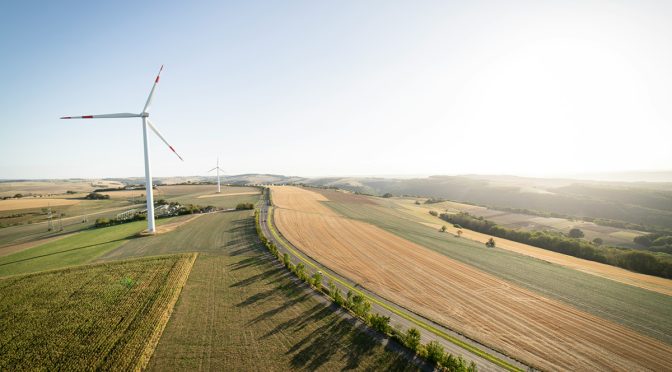
Things are really looking up again for onshore wind in Germany. Last year they were building over twice as much new onshore wind as they were each year over 2018-22. Permitting reforms mean more new projects are being approved than at any time since 2016. And they now plan to auction a massive 15 GW of new capacity this year. The Government is also taking the right decisions on port infrastructure investments.
German onshore wind is going from strength to strength. In a blockbuster announcement the German Federal Network Agency Bundesnetzagentur (BNetzA) has just raised the onshore wind auction volumes for 2024 to almost 15 GW. To put this in perspective, that’s more onshore wind than all European countries combined built in 2023. And four times what Germany installed last year – which at 3.6 GW was already more than twice what Germany was building each year over 2018-22.
The updated onshore auction volume is almost 50% higher than the 10 GW Germany had originally aimed for in 2024. The additional 5 GW are volumes that were not awarded in undersubscribed auctions in 2023. The ceiling price remains unchanged at €73.5/MWh.
BNetzA based the decision to raise the auction volumes on lasting improvements in onshore wind permitting. Germany had been fast and rigorous in implementing the EU’s emergency regulations on permitting, including the notion of “overriding public interest” for wind energy projects. This principle is already unlocking onshore wind projects that would otherwise have remained stuck in legal procedures.
Together with other legislative changes this has led to an uptake in new wind energy permits. Last year alone Germany permitted 7.5 GW, an increase of more than 70% on 2022 and the second-best result on record. The first quarter of 2024 saw additional 1.2 GW in new onshore wind permits, hinting to similarly high permitting numbers for this year. BNetzA and the wind industry are optimistic that the positive trend will continue, generating a pipeline of permitted projects big enough to fill the remaining three auction rounds of 4.1 GW each in 2024.
On top of that Germany is set to auction 8 GW of offshore wind this year. A first offshore wind tender of 5.5 GW has already opened.
WindEurope CEO Giles Dickson says: “Germany shows what’s possible if you’re serious about expanding wind. They’re auctioning 23 GW this year alone. They’re top of the class in implementing the new EU permitting rules. Many more new projects are getting approved than before, especially in onshore wind. This is good for their energy security and good for their industry who are crying out for large amounts of cheap electricity”.
New data released in March shows that wind energy is now the biggest source of electricity generation in Germany, having overtaken coal. In 2023 renewables were 56% of all electricity generated in Germany. Wind was 31%, solar was 12%, biogas 6% and hydro 4%. Nuclear was only 1.5% and is now definitely phased-out in Germany.
“Germany is now proving you can run a highly industrialised economy on very high shares of renewables. Other countries should emulate this: fully apply the new EU permitting rules; and take all the other actions in the EU Wind Power Package to speed up the expansion of wind and strengthen Europe’s wind industry”, says Giles Dickson.
Government facilitates crucial investment in the Port of Cuxhaven
The German Government is also taking the right decisions on port infrastructure investments.
The Government will contribute to a 30-hectare expansion of the heavy-duty offshore terminal in the Port of Cuxhaven, which is key to the import of blades and nacelles from southern Europe and elsewhere. Together with the State of Niedersachsen and private companies, they’re investing €300m in total. The port already has planning approval for the expansion.
Ports are not just critical for offshore wind. Onshore wind also relies on the timely and seamless import and export of large wind turbine components.
But the investment in Cuxhaven is just the starting point for what we need to see. Insufficient port infrastructure is putting Germany’s new onshore wind expansion plans at serious risk. Germany urgently needs a national port strategy to identify investment needs and implement priority projects. A quick fix could be to use a portion of the billions in revenue from the offshore wind auctions in 2023 and 2024 to upgrade Germany’s port infrastructure and to invest in its wider supply chain.
And Germany needs to improve the Hinterland transport routes. This includes the expansion of motorways and improvements to motorway exits and bridges. Crucially it also needs to ensure that transport permits are granted faster and less bureaucratically. Transport permits for wind energy components have been a major roadblock for the expansion of wind energy in Germany in previous years.